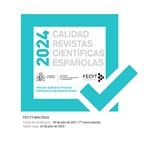Hate Speech y libertad de expresión desde la Grecia de Sócrates a la democracia actual. (RI §420578)

Hate Speech and freedom of speech from socrates’ greece to current de-mocracy -
David Martín Herrera
Resulta incuestionable que la manifestación del pensamiento y los sentimientos sea una de las partes intrínsecas del ser humano sin las cuales no sería posible concebir el desarrollo humano. Sin su efectivo ejercicio, hubiese sido imposible conocer, de forma básica, el modo de vida de nuestros ancestros. Su empleo es propiamente el más efectivo de los instrumentos combativos de lo injusto, razón por la que, de forma desnaturalizada, se ha venido codificando su ejercicio, lo cual nos muestra que la libertad de expresión es el más temido de los derechos y el más efec-tivo de los instrumentos.
A través de este estudio vamos a analizar la legendaria eminencia de Sócrates, el contenido y el contexto de los discursos por los que fue condenado a muerte y la ulterior evolución del Derecho a la libertad de expresión.
I. LA LIBERTAD DE EXPRESIÓN EN LA GRECIA DE SÓCRATES: EL MÁS FUNDAMENTAL Y TEMIDO DE LOS VALORES. 1. ¿Qué papel desempeñó Sócrates en el surgimiento de la libertad de expresión?. 2. La libertad de expresión en la educación y la infancia. Un conflicto razonable que atormentaba a Sócrates. 3. Apología de Sócrates. Donde la razón es algo irrefutable. II. CO-GITATIONES POENAM NEMO PATITUR. EL DISCURSO COMO FORMA DE GOBIERNO Y TRANSMISIÓN DEL CONOCIMIENTO Y LA DIGNIDAD HUMANA. 1. La libertad de expresión: un camino en la búsqueda de la dignidad humana, la trasmisión de la verdad y el conocimiento. III. LA LIBERTAD DE EXPRESIÓN Y LÍMITES HISTÓRICOS: ¿INSTRUMENTOS DE DEMOCRATIZA-CIÓN Y DE CONTROL PARA LAS SOCIEDADES MODERNAS?. 1. Del libelo sedicioso británico a la legislación estadounidense.
The expression of thoughts and feelings is unquestionably one of the intrinsic parts of the human being without which it would not be possible to conceive human development. If our ancestors had not used their full right to freedom of expression, it would have been impossible for us to find out, even in a basic way, about their lifestyle. Its use is properly the most effective instrument to fight injustices, which is one of the reasons why its exercise has been codified, and which shows us that the freedom of expression is the most feared of the rights and the most effective of the instruments.
Through this study, we will analyze the legendary eminence of Socrates, the content and con-text of the speeches for which he was sentenced to death and the further evolution of the right to freedom of expression.
I. FREEDOM OF SPEECH IN SOCRATES’ GREECE: THE MOST ESSENTIAL AND MOST FEA-RED OF THE VALUES / 1. Which role played Socrates in the origins of freedom of speech? / 2. Freedom of speech in education and childhood. A reasonable conflict tormenting Socrates / 3. The Apology of Socrates / II. COGITATIONES POENAM NEMO PATITUR. DISCOURSE AS A FORM OF GOVERNMENT AND TRANSMISSION OF KNOWLEDGE AND HUMAN DIGNITY / 1. Freedom of speech: a path towards the encounter of human dignity and transmission of truth and knowledge /II. FREEDOM OF SPEECH AND ITS HISTORIC LIMITS: ARE THEY INSTRUMENTS FOR THE DEMOCRATIZATION AND CONTROL OF MODERN SOCIETIES? / 1. From British sedi-tious libel to US law.

 DIRECTORA
DIRECTORA